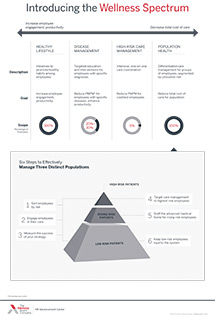Auto logout in seconds.
Continue LogoutEditor's note: This popular story from the Daily Briefing's archives was republished on April 11, 2019.
The New York Times' David Leonhardt wants you to know that the sugar industry has invested time and money "trying to trick" you into eating more sugar—and he has a guide on how to cut back.
Avoid these 5 pitfalls when auditing your diabetes program
Why added sugar is so insidious
While sugar occurs naturally in many foods—including dairy, fruit, and vegetables—it's often added during processing to prepared foods, such as sauces and baked goods. The problem with added sugars is that they "add calories without adding nutrients," according to a Mayo Clinic explainer on added sugars. Further, Mayo notes that eating too much added sugar is linked to a range of health problems, including poor nutrition, weight gain, increased triglycerides, and tooth decay.
Leonhardt explains, "It's not that the added [sugars] are so much worse" than natural sugars, but rather that "people don't generally overeat natural sugars."
The 2015-2020 Dietary Guidelines for Americans recommend that added sugars compromise no greater than 10% of daily caloric intake. According to Mayo, however, U.S. adults consume 13% of their daily calories in added sugars.
Leonhardt contends the sugar industry—and its "offshoots," such as the soda industry— "has paid researchers to conduct misleading—if not false—studies about the health effects of added sweeteners." Further, the industry "has managed to get sugars into a remarkable three-quarters of all packaged foods" in the country.
As such, Americans "eat a lot of sugar," Leonhardt contends. "Virtually the only way to eat a healthy amount of sugar is to make a conscious effort."
4 ways to reduce your sugar intake
Leonhardt offers a four-step guide, compiled with colleagues and experts, for how to reduce added sugar intake "without spending more money or losing the pleasure of eating." He advises that it's better "to choose a couple of simple rules" rather than "agonize over the sugar content of every single thing you eat."
1. Avoid sugar at 'the most dangerous meal of the day'
Leonhardt's guide begins with breakfast, which he calls "the most dangerous meal of the day," given the high-sugar content of conventional breakfast foods like flavored yogurt and granola.
To reduce sugar at breakfast, Leonhardt has "two main strategies." One is to "mov[e] away from a grain-based breakfast" and opt for eggs, plain yogurt, fruit, or "well-spiced vegetables." To those who are hooked on a grain-based breakfast, Leonhardt urges them to be "quite careful" and look for low-sugar options, such as Cheerios, plain oatmeal, certain brands of bread without sugar, and homemade granola that's made with less sugar.
2. Break your soda addiction
When it comes to drinks, Leonhardt offers frank advice: "Eliminate soda from your regular diet." For people who turn to soda for caffeine, he suggests coffee or tea instead. For people who want something carbonated, he suggests seltzer—or diet soda "if you must," he writes.
3. Watch out for unexpected sugar in pantry staples
Leonhardt warns to watch out for sugar hiding in pantry staples and sauces. For instance, Wheat Thins and Ritz have added sugar, while Triscuits and Saltines don't. As for sauces, most tomato-based sauces, barbecue, and even some mustards have added sugar.
Noting his own fondness for barbeque, Leonhardt explains that sometimes, it makes sense to keep the sugars you really crave and instead "cut back on (sugar) elsewhere." He also suggests making sauces at home rather than buying highly sweetened premade versions.
4. You knew this was coming: Be careful with dessert
Finally, Leonhardt offers three rules for dessert. First, limit portion size, which has grown over time. Second, break out of routinely eating dessert, such as a bowl of ice cream every night, by swapping in something else, such as a cup of tea. Three, opt for fruit, which is "sweet, delicious, and full of nutrients and fiber."
Leonhardt concludes, "For a long time, we didn't even realize what Big Sugar was trying to do us. Now we do—and we can fight back" (Leonhardt, New York Times, 3/11; Leonhardt, "Smarter Living," New York Times, accessed 3/14; "Healthy Lifestyle," Mayo Clinic, accessed 3/14).
How six hospitals launched diabetes management programs
As obesity and diabetes rates rise across the country, many hospitals have developed outpatient diabetes centers. The most progressive hospitals have combined diabetes treatment, education, wound care, ophthalmology, and other services into comprehensive programs.
In this briefing, we profile six leading institutions who have successfully integrated outpatient diabetes services into their primary care networks.
Don't miss out on the latest Advisory Board insights
Create your free account to access 1 resource, including the latest research and webinars.
Want access without creating an account?
You have 1 free members-only resource remaining this month.
1 free members-only resources remaining
1 free members-only resources remaining
You've reached your limit of free insights
Become a member to access all of Advisory Board's resources, events, and experts
Never miss out on the latest innovative health care content tailored to you.
Benefits include:
You've reached your limit of free insights
Become a member to access all of Advisory Board's resources, events, and experts
Never miss out on the latest innovative health care content tailored to you.
Benefits include:
This content is available through your Curated Research partnership with Advisory Board. Click on ‘view this resource’ to read the full piece
Email ask@advisory.com to learn more
Click on ‘Become a Member’ to learn about the benefits of a Full-Access partnership with Advisory Board
Never miss out on the latest innovative health care content tailored to you.
Benefits Include:
This is for members only. Learn more.
Click on ‘Become a Member’ to learn about the benefits of a Full-Access partnership with Advisory Board
Never miss out on the latest innovative health care content tailored to you.

